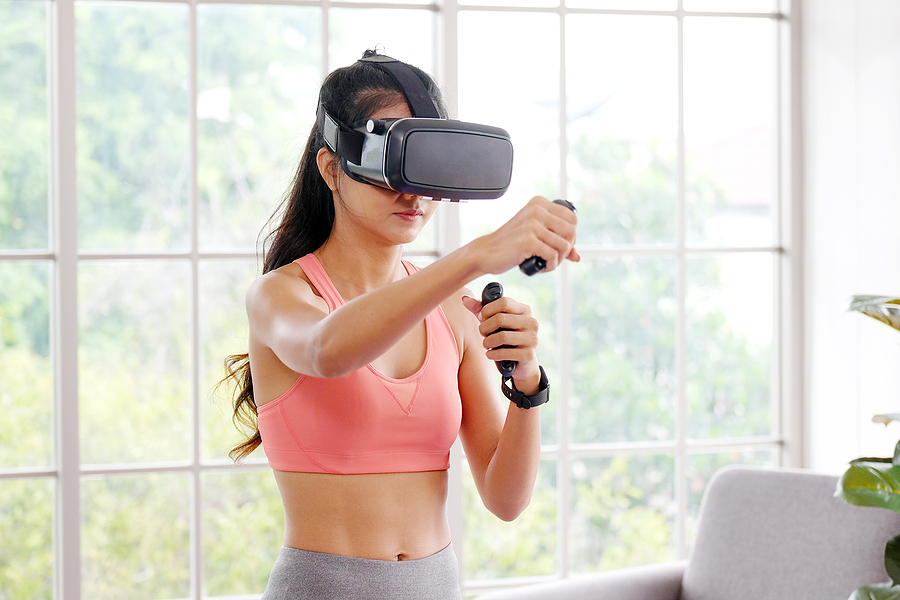Are you ready to plunge into the mesmerizing universe of virtual reality? VR isn’t confined to futuristic films anymore; it’s now, and it’s reshaping our interaction with entertainment, learning, and professional settings. Whether you’re a tech aficionado or just dipping your toes, this comprehensive guide covers all facets of virtual reality for you.
What is Virtual Reality?
Table of Contents
Virtual Reality, commonly known as VR, employs cutting-edge technology to plunge users into a meticulously crafted digital world, making it feel astonishingly real. It’s akin to traversing into an alternate universe without ever stepping out of your home space. Dive into the essentials:
All-encompassing Ambience: Through a VR headset, often complemented by handheld devices, you’re enveloped in a 3D sphere with a 360-degree perspective. Viewing VR videos makes you feel embedded within the action.
Multisensory Engagement: Beyond just visual stimuli, VR incorporates auditory elements, and occasionally tactile feedback, enhancing your engagement and interaction with the virtual surroundings.
True-to-life Interactivity: With VR, your movements and actions find a reflection in this digital cosmos, enabling you to engage with entities as though they exist tangibly, amplifying the immersion quotient.
Getting Started with VR
So, you’ve decided to take the plunge and venture into the world of VR. Here’s your step-by-step guide to getting started:
Step 1: Choose Your VR Headset
The first thing you’ll need is a VR headset. Consider your budget and the type of experience you want. Remember, tethered headsets offer the most immersive experience, while standalone ones are more convenient.
Step 2: Check Compatibility
If you’ve opted for a tethered headset, ensure your PC or console meets the system requirements. This step is crucial for a smooth VR experience.
Step 3: Setup
Setting up your VR headset might seem daunting, but most come with user-friendly instructions. Follow them carefully, ensuring everything is connected correctly.
Step 4: Calibration
Calibrate your headset to your preferences, including your IPD (interpupillary distance) to ensure the visuals are crystal clear.
Step 5: Download VR Apps
Most VR platforms have their own app stores. Browse and download VR games, experiences, and apps that pique your interest.
Step 6: Start Exploring
Strap on your headset, secure your controllers, and embark on a journey through the digital realm. Initially, ease into it to sidestep the occasional dizziness, a typical hiccup for VR beginners.
The VR Experience
Once you’re geared up, you’re ready for the vastness of the VR universe. Here’s a glimpse of what’s in store:
Immersive Gaming: VR gaming is a whole new level of fun. From sword-fighting in ancient dungeons to exploring alien worlds, you’ll be right in the action.
Digital Exploration: Ever dreamt of globe-trotting from your couch? VR whisks you to distant corners, be it the bustling lanes of Paris or the enigmatic abyss of the seas.
Interactive Learning: Beyond sheer amusement, VR offers a treasure trove of educational tools. Delve into human anatomy, wander around ancient landmarks, or even master a foreign tongue using VR.
Communal Engagement: Contrary to the belief of VR being an isolated adventure, numerous platforms enable you to engage with individuals globally in a digital setting. It’s a refreshing way to forge bonds.
Common VR Challenges and How to Overcome Them
Motion Sickness: Some users may experience motion sickness, especially during fast-paced VR experiences. To reduce this, start with less intense games and gradually build up your tolerance. Also, ensure you have good ventilation in your VR space.
Space Constraints: Not everyone has a massive room for VR. But fear not, many VR experiences are designed to work in smaller spaces. Just be mindful of your surroundings and set up guardian boundaries to avoid bumping into things.
Cost: High-end VR setups can be expensive. If cost is a concern, consider more affordable options like standalone headsets or smartphone VR.
Content Availability: While the VR library is growing, it’s not as extensive as traditional gaming platforms. Research the available content for your chosen headset to make sure it has what you’re looking for.
Comfort: VR headsets can get heavy and uncomfortable during long sessions. Take regular breaks and invest in accessories like padded face cushions for added comfort.
The Future of VR
Virtual reality is an evolving technology, and the future looks promising. Here are some exciting developments on the horizon:
Improved Graphics: As technology advances, VR graphics will become more realistic, enhancing the immersion factor.
Wireless Freedom: Expect more wireless VR options in the future, freeing you from the tether to your PC or console.
Better Haptics: Haptic feedback technology will continue to improve, making virtual interactions feel even more real.
More Diverse Content: VR content will diversify, catering to a wider range of interests, from gaming to education, productivity, and beyond.
Healthcare and Therapy: VR is increasingly being used in healthcare for therapies, pain management, and even surgical training.
Conclusion
Virtual reality is an exhilarating innovation that can whisk you away to previously unimagined realms and alter your perception of leisure and learning. Whether you’re an avid gamer, a keen wanderer, or a seeker of avant-garde educational methods, VR beckons with a wealth of opportunities.
Image Source: BigStockPhoto.com (Licensed)
Related Categories: Tech, Reviews








